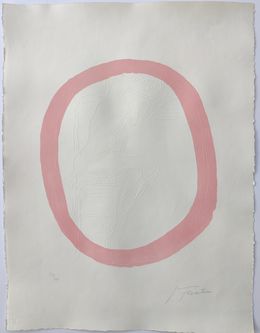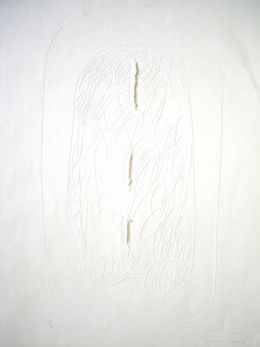





Concetto Spaziale
Lucio Fontana
Print - 20.5 x 17.5 x 0.1 cm Print - 8.1 x 6.9 x 0 inch
$7,423 $6,309








Untitled
Lucio Fontana
Fine Art Drawings - 30 x 20 x 0.1 cm Fine Art Drawings - 11.8 x 7.9 x 0 inch
Sold
Art is the soul of life.
Biography
Italian-Argentinian painter and sculptor of the 20th century, Lucio Fontana remains today known as the founder of the so-called “spatial" artistic movement. From his birth on February 19, 1899 in Rosario de Santa Fe, until his death on September 7, 1968 in Comabbio, Lucio Fontana lived between Argentina and Italy.
As a teenager, he entered the Special Building School of Milan, and then became a sculptor in the 1920s, under the tutelage of his master, Adolfo Wildt.
In the 1930s, Fontana joined forces with French and Italian expressionist and abstract painters. He then began to work with new materials such as plastic, concrete, bronze and ceramics ...
During World War II, Lucio Fontana returned to Argentina where he took up a teaching post at the School of Fine Arts in Buenos Aires. Despite the distance, the artist does not forget the old continent and calls for an artistic protest against the war. In 1946, he published the “Manifesto Blanco", the first manifesto on spatialism, which pushed artists to deny “the uses of known forms of art". This book feeds a whole reflection on time and space.
From this research, Lucio Fontana will find his signature pictorial style: monochrome canvases with deep tears that mark a double escape, symbolic and material. Influenced by Gyula Kosice, light also occupies a central place in his work. The first “space" exhibition brings together the work of many painters such as Giancarlo Carozzi, Gianni Dova or Cesare Peverelli ... but, it is Fontana that the young generation sees as a spiritual father.
The latter's notoriety exploded with the general public in 1961, when the famous gallery owner Iris Clert devoted a solo exhibition to him. In 1966, it was around MoMA in New York to honor him. In France, it was not until 1987 to see such a retrospective devoted to the artist, at the Center Pompidou.
Now you can admire his creations in the collections of all the major cultural institutions in the world.
Nationality
Categories
Artistic movements
Themes





